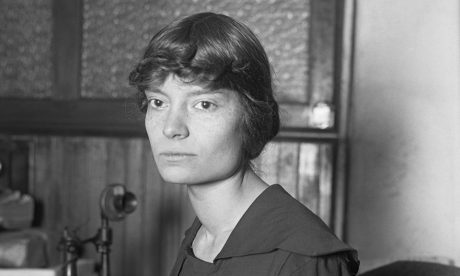One way to understand the saints—the radiant, aberrant beings next to whom the rest of us look so shifty and shoddy—is to imagine them as cutting-edge physicists.
Their research, if you like, has led them unblinkingly to conclude that reality is not at all what, or where, or who we think it is.
They have penetrated the everyday atomic buzz and seen into the essential structures. They have seen, among other things, that the world is hollowed-out and illumined by beams of divine love, that the first shall be last and the last shall be first, and that sanctity—should you desire it—is merely to live in accordance with these elementary facts.
Whether or not the Catholic Church makes it official—and the cause for her canonization rumbles on—Dorothy Day was most definitely a saint. Is a saint, because her holiness has suffered no decrease in vitality since her death, at age 83, in 1980, and her example, her American example, is more challenging and provocative today than it ever was.
Day was about people, especially poor people, especially those whom she called with some wryness “the undeserving poor,” and the paramount importance of serving them. For her, what the Church defines as Works of Mercy—feeding the hungry, visiting the sick, sheltering the homeless, and so on—were not pious injunctions or formulas for altruism but physical principles, as inevitable as the first law of thermodynamics.
Pare her right down to her pith, strip away all her history and biography, and what do you get? A fierce set of cheekbones and a command to love. That’s the legacy of Dorothy Day, and it is endless.
Her history and biography, nevertheless, are intensely interesting, particularly as revisited by her granddaughter Kate Hennessy in Dorothy Day: The World Will Be Saved by Beauty.
What a story. Although the chronology, and even the spiritual progress (so far as we presume to discern it) are straightforward—from bohemianism to radicalism to motherhood to Catholicism to a life, a mission, of purely focused sacrifice and activism—the images are kaleidoscopic.
There’s Greenwich Village Dorothy, cub reporter, in the teens of the 20th century: “cool-mannered, tweed-wearing, drinking rye whiskey straight with no discernible effect.” She’s with her buddy Eugene O’Neill—the Eugene O’Neill—in a bar called the Hell Hole.
O’Neill, with “bitter mouth” and “monotonous grating voice,” is reciting one of his favorite poems, Francis Thompson’s “The Hound of Heaven”: I fled Him, down the nights and down the days; / I fled Him, down the arches of the years. By way of response, Dorothy sings “Frankie and Johnny.” Continue reading
Source and Image:
- Article by James Parker, a contributing editor at The Atlantic.
News category: Features.




